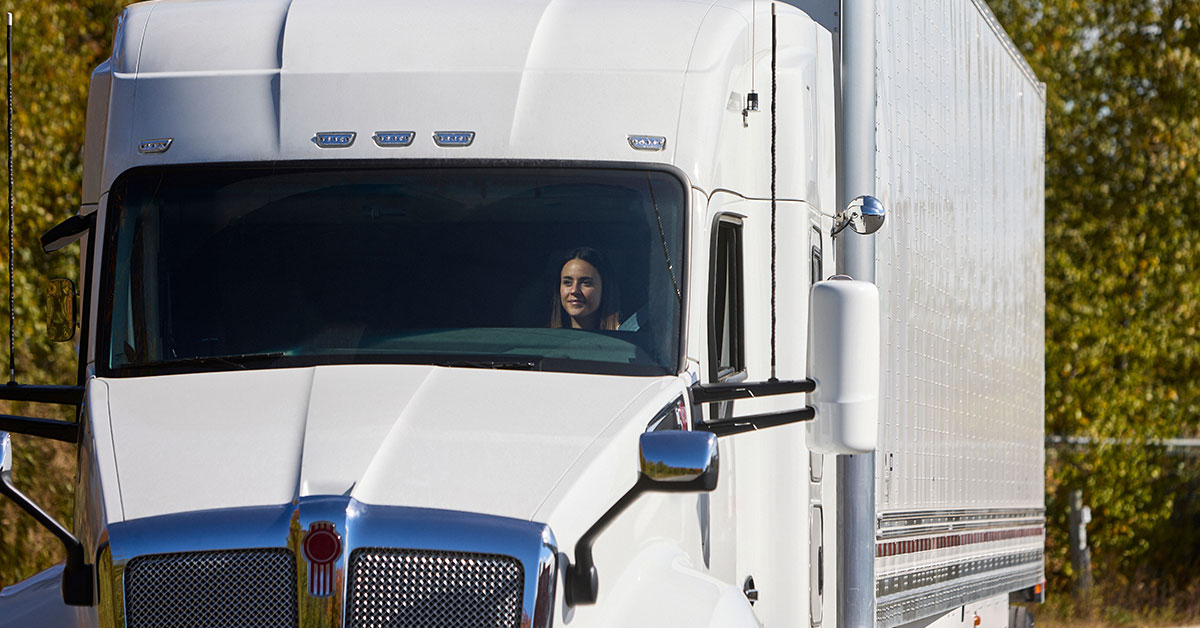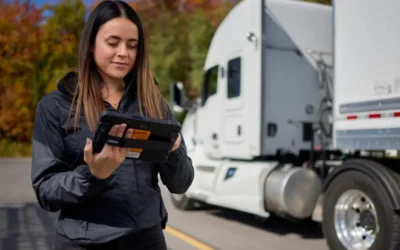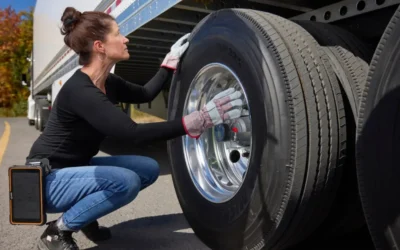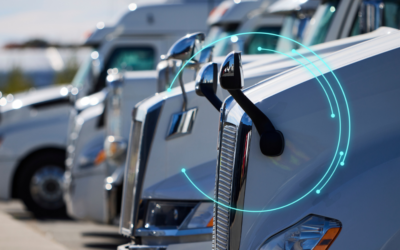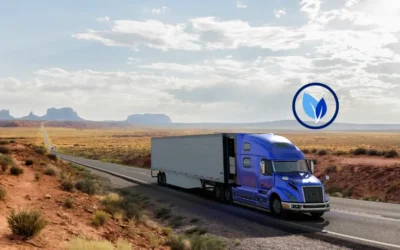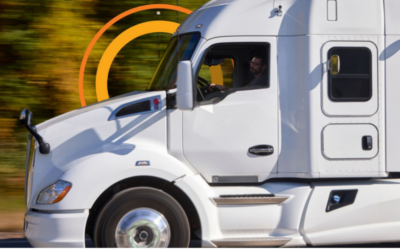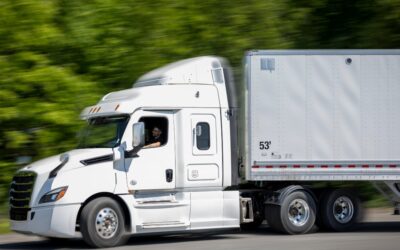Greenhouse gases (GHGs) like carbon dioxide, methane, and nitrous oxide are responsible for global warming. Though these pollutants come from different sources, the transportation sector is one of the largest contributors. According to the Environmental Protection Agency (EPA), transportation accounts for 29% of GHGs emitted in the United States.
While we may want to reduce emissions, trucking operations are necessary to keep the supply chain the world relies on moving. Stopping or slowing the transportation sector is not a realistic option. The best solution is to limit emissions by using eco-friendly driving practices. These efforts can involve optimizing routes and loads for maximum efficiency, coaching drivers in real-time on efficient vehicle operation, and installing technology that helps reduce fuel consumption and emissions.
Here is a closer look at the technology, considerations, and techniques involved in smart route planning.
Understanding the Importance of Sustainability in Eco-Driving and Route Planning
The fuel efficiency of vehicles plays a role in the emissions they produce. However, driving practices also have an impact on the amount of GHGs released during a trip.
The EPA lists idling as one of the main culprits of unnecessary vehicle pollution. The agency states that modern cars do not need to warm up in the winter to function correctly, and drivers should turn off their cars if stopping for an extended period. Many of today’s vehicles have electronic start-stop (ESS) systems that turn off the engine when the vehicle stops.
Aggressive braking kills momentum, requiring the vehicle to burn more fuel when accelerating again, and rapid acceleration likewise emits more carbon than necessary. FuelEconomy.gov estimates drivers use 15% to 30% more gas on the highway and get 10% to 40% worse economy in the city if they have aggressive driving practices like rapid acceleration, speeding, and hard braking. Drivers can cut down on these aggressive habits to increase overall efficiency.
Route planning can also reduce transit-related pollutants. This reduction may be due to several different factors.
- Logistics professionals can reduce the overall distance traveled by using software to plan loads and reduce the overall distance traveled.
- Traffic analysis can help drivers avoid peak times when they are more likely to experience stop-and-start conditions.
- Drivers can select routes that avoid city streets to reduce stopping and idling at traffic lights.
- Fleets can distribute loads to reduce overall fuel consumption across all vehicles.
Route planning, combined with efficient driving practices and driver performance monitoring, can significantly reduce fuel consumption and emissions.
Adopting Eco-Driving Principles
Eco-driving involves using practices that reduce fuel consumption and emissions and avoiding aggressive techniques that require more power. In addition to gradual acceleration and braking, drivers can use proper following distances, limit air conditioner use at speeds up to 40 MPH, and rely on cruise control on highways.
The benefits of eco-driving go beyond an increase in miles per gallon statistics.
- These techniques reduce fuel consumption by up to 40% on city streets and 30% on the highway, lowering costs and increasing the time between fill-ups.
- Less fuel consumption also means a reduction in GHG emissions. Drivers who observe eco-driving principles have a lower carbon footprint.
- Safety and eco-driving go hand in hand. Because eco-driving techniques require non-aggressive driving, they increase safety while reducing emissions.
- Gradual acceleration and braking reduce wear on the engine, brakes, tires, transmission, and other vehicle components, increasing their longevity.
Training and driver coaching are essential for adopting eco-friendly principles. Drivers may fall back on old habits during lengthy trips or routes with many deliveries. Vehicle monitoring, analysis, and clear feedback to change driving practices can help instill eco-driving principles throughout your fleet.
Promoting Alternative Fuel Sources and Electrification
Demand for electric vehicles (EVs) is growing. Worldwide, EVs claimed a 14% share of the auto market in 2022. That figure should rise to 18% in 2023. Electric commercial vehicles are less common, with 1.2% of new trucks and 4.5% of buses falling into the electric category. 3.2% of light-duty vehicles are all-electric and an additional 6.1% are hybrids.
Many heavy commercial vehicles use a cleaner version of diesel. B5 and B20 biodiesel, which contain up to 5% and 20% biodiesel, work in most engines without requiring modifications.
These electrified, hybrid, and clean fuel options can help improve overall fleet efficiency. The same eco-driving practices that lower internal combustion engine fuel consumption can also improve electric range and limit biodiesel usage, which burns slower than standard gas.
Biodiesel is commonly available in B5 and B20 varieties, with higher concentrations sold by fueling stations listed on the Department of Energy’s Alternative Fuels Data Center. The resource also lists EV charging stations.
The challenge for fleets using alternative fuels is finding charging and fueling stations. Most of the infrastructure still focuses on traditional fuels. This challenge is more pronounced for long-haul transport.
Leveraging Advanced Technologies for Efficient Route Planning
Efficient route planning can complement eco-driving practices and fuel choices. Electronic logging devices (ELDs), cameras, communication protocols, and other sensors and data collection devices, combined with algorithm-powered route-planning software, can streamline fleet operations.
Lower fuel consumption can reduce GHG emissions, save the company money on fuel, and increase safety. Here are three areas in which technology can offer cost-saving and efficiency benefits.
Harnessing Data to Optimize Driver Routes and Loads
Route planning involves analyzing traffic, fuel use, and load size data and selecting the best roads to use for long-haul trips or a series of deliveries. The more data route planners can feed into route planning algorithms, the more optimized the routes may be.
Load optimization can limit the number of overall trips for the fleet. By maximizing loads, the company can make all its deliveries and transfer materials to required destinations while limiting fuel use by completing the tasks with fewer vehicles.
Route optimization does not stop once the vehicle leaves the warehouse with its load. In-cab ELDs and telematics can transmit and collect data on the vehicle and driver as it moves along its route. This information can highlight adjustments for the driver to make during their journey.
Streamlining Communication
Efficient operations are possible when everyone involved in planning and carrying out the journey is on the same page. Dispatchers, managers, and drivers need to communicate effectively and make decisions using actionable information.
A fleet management portal organizes information in a central location so that all dispatchers and managers can access it as soon as needed. Telematics equipment inside the vehicles can provide real-time data and serve as a way for drivers to remain connected with their headquarters at all times regardless of conditions on the road.
With real-time information and centralized management capabilities, drivers can get the guidance they need to make adjustments mid-route if needed and adhere to eco-driving practices.
Reducing Fuel Consumption
Reduced fuel consumption can save thousands per year. Companies with fuel economy programs can save $4,000 to $5,000 per year by improving efficiency by as little as a half-mile per gallon in vehicles traveling at least 100,000 miles per year.
With data collection, trucking, and delivery companies can analyze driver performance, look for areas for improvement, and coach drivers on how to improve efficiency. With the right tools, they can monitor driver performance and make real-time suggestions, limiting fuel consumption throughout the journey. Not only will this save the company money, but it will give drivers the support to meet expectations.

